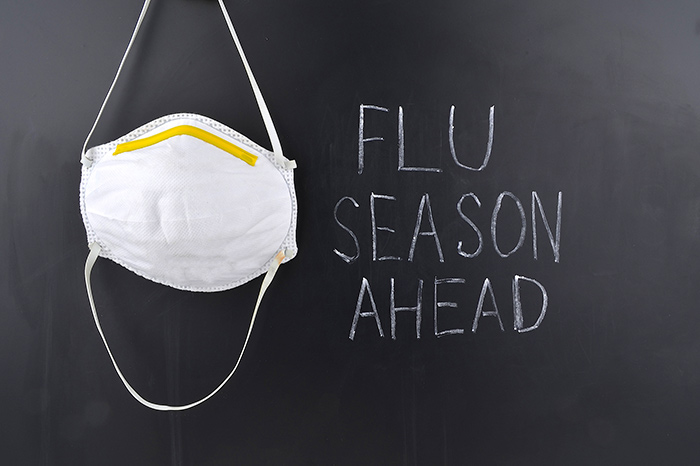
The official first day of fall is just around the corner, and with the COVID-19 pandemic still very much a reality, getting your flu shot might be more important than ever.
Cases of the flu usually rise from November or December through March. One particular concern this year is that hospital beds will become filled up as a result, and then what happens if we have a parallel outbreak of COVID-19? “Getting your flu shot in September or October can help reduce the burden on hospitals and limit the amount of trips you have to make into a health care facility, not to mention keep you and your family healthy,” said Karen Foulds, MD, with Holland Hospital Family Medicine – South Washington.
The best way to prevent the flu is through vaccination. A flu shot cannot cause the flu. The viruses contained in a shot are inactivated (killed), which means they cannot cause infection. Each year’s vaccine will protect against the flu viruses CDC researchers believe will be most common during that specific season. There are several different flu vaccines available, so talk to your health care provider about which option is right for you. (It’s critical for people with chronic illness to get vaccinated; however, anyone can benefit from a flu shot. The CDC recommends yearly flu vaccination for everyone older than 6 months of age, including pregnant women.)
Different Viruses
Because flu and COVID-19 are caused by different viruses, it’s possible to become infected with both at the same time or sequentially (one right after the other). Severe cases of influenza or COVID-19 separately can be dangerous or even life-threatening. While receiving a flu shot doesn’t guarantee you won’t get the flu, it most likely will mean less illness severity, often safeguarding patients from serious complications like respiratory failure.
“For many Americans, especially older adults and those with underlying health conditions, the flu can be much more than a bad cold,” Dr. Foulds said. According to the CDC, the flu caused more than 490,000 hospitalizations and over 34,000 deaths in 2018-2019. In previous years, those numbers were higher.
Outside of hospitalization challenges, a big jump in flu cases could also contribute to coronavirus testing delays. Because flu and COVID-19 have similar (although not all) symptoms, almost anybody who presents with a flu-like illness will appear to have a COVID-like illness. Diagnosis of COVID-19 can’t be definitive without a test, and differentiating the two illnesses matters for many reasons, including treatment.
Currently, there are antiviral drugs that can treat the flu, but while some medications have received emergency use authorizations for COVID-19, so far no drugs have received official approval from the FDA. This past summer, a backlog led to longer than recommended wait times for coronavirus testing results, and if millions of flu patients are dropped into the mix this fall, that situation could repeat.
“Social distancing, wearing face masks, practicing good handwashing and flu vaccination could all help place less pressure on the COVID-19 testing system,” Dr. Foulds added.
So where’s the best place to get your shot? Certain locations, such as workplaces, might not be able to provide access to the flu shot this year due to maintaining coronavirus precautions. However, pharmacies, (including places like CVS and Walgreen’s), doctors’ offices and health departments are still offering flu shots, which are often free with insurance. Learn more about how to fend off the flu.
In your neighborhood and close to home, Holland Hospital’s pediatric, family and internal medicine specialists are focused on your health and wellness—delivering experienced and compassionate care for the entire family.